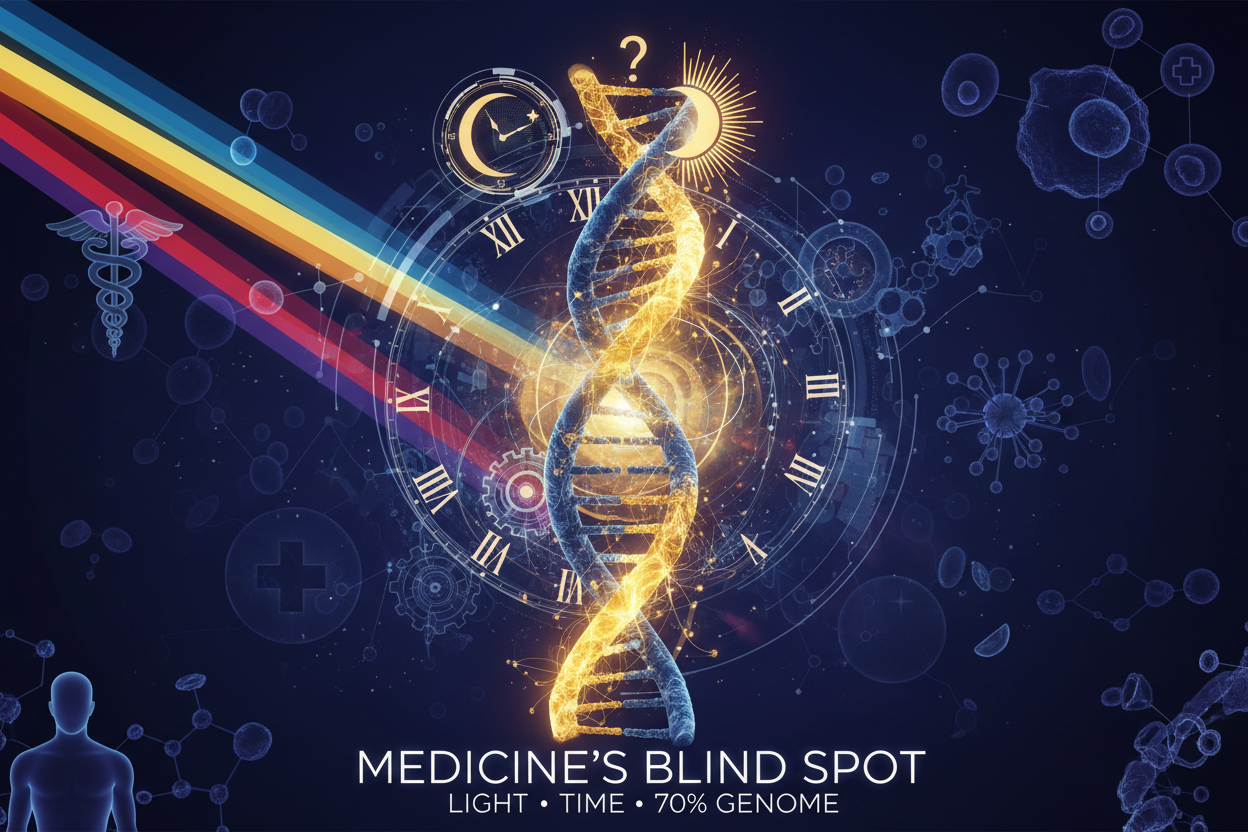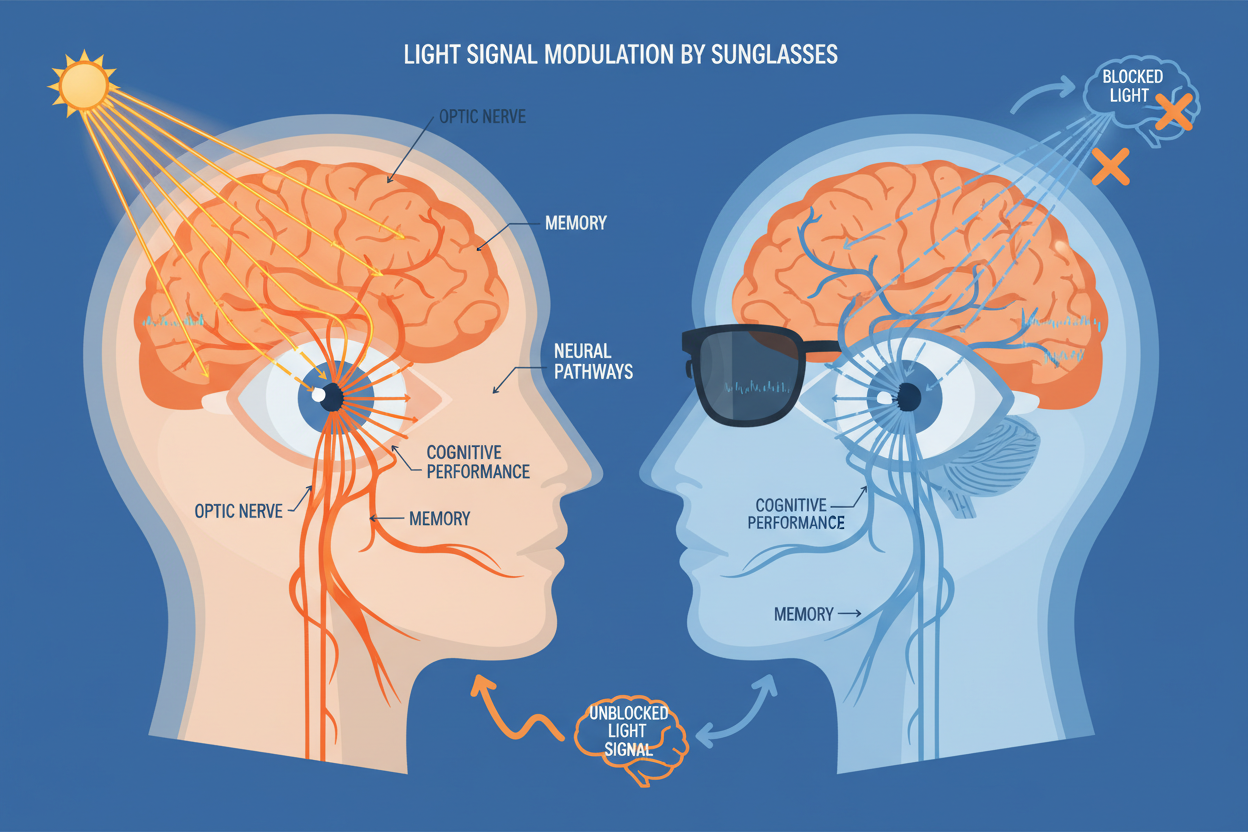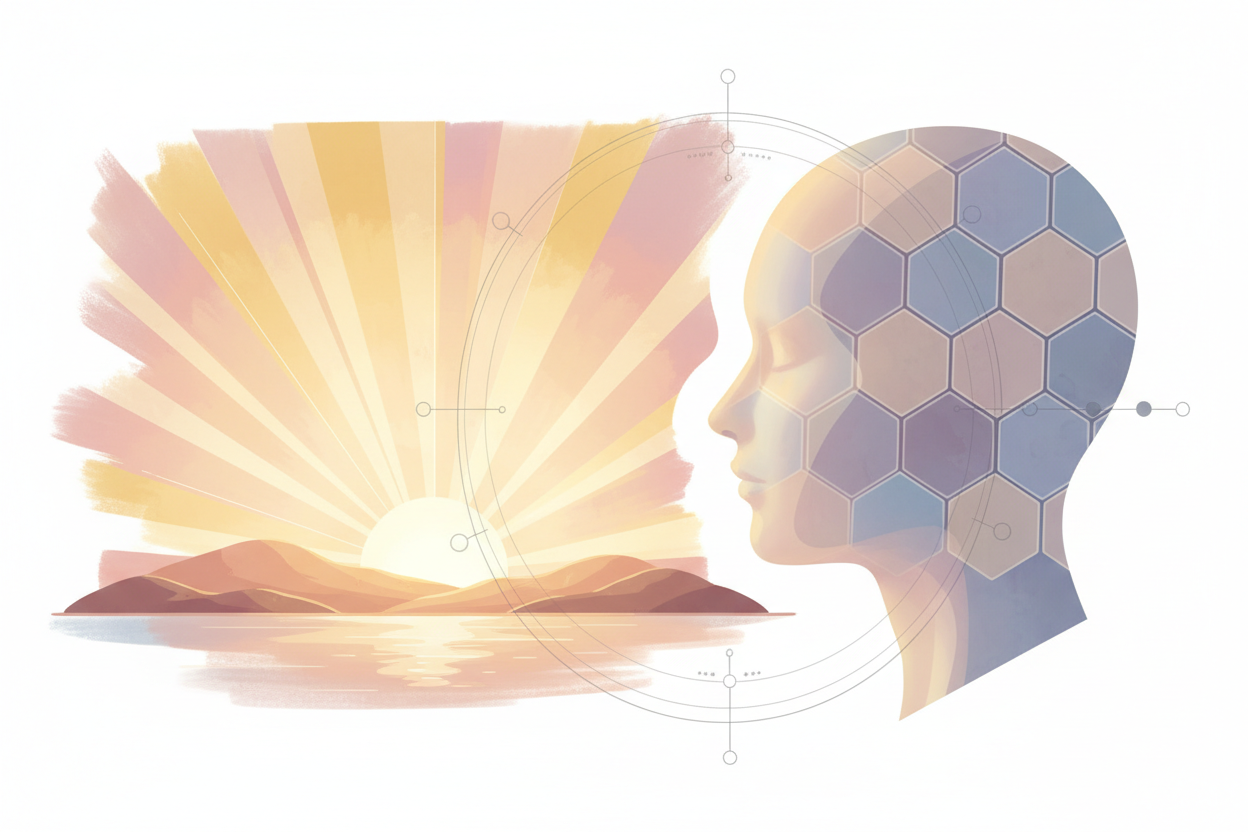You may believe that New Year's diets and gym workouts do not bring the desired results. One possible culprit could be exposure to artificial blue light, which has significantly negative effects on our body.
The effect of artificial blue light
Artificial blue light has been a part of our lives since 1893. However, its impact on our health is not negligible. Blue light naturally varies in the solar spectrum depending on the latitude. Unlike sunlight, artificial lighting lacks the natural antidote in the form of infrared light (IR-A), which makes up 42% of the total spectrum.
Chronic exposure to artificial blue light is comparable to excessive carbohydrate intake, as both situations involve an excess of photoelectric energy. These high energies dehydrate mitochondria similarly to how a steak dehydrates in a microwave. Blue light slows down the flow of electrons in the mitochondrial electron transport chain, which reduces the rotation of ATP synthase.
Consequences for mitochondrial function
Normally, mitochondria produce CO2 and water as byproducts during glucose metabolism and beta-oxidation of fats – which are signs of their healthy functioning. However, if mitochondria are inefficient for any reason, they become dehydrated. This then manifests in a range of symptoms such as constipation, dry skin, dry eyes, dry vagina, lack of saliva, hangover, headaches, and increased susceptibility to concussions.
Mitochondria in animal cells reverse the photosynthesis process of chloroplasts in plants. This affects their functions in the long term, as they have evolved in anticipation of seasonal variability in energy. People who exercise under modern artificial blue lighting, which saves electricity by eliminating the red and violet spectrum, often suffer from headaches.
How artificial light affects the brain
Artificial light quickly disrupts the biological clocks that control chemical processes in the body, including the cell cycle that regulates growth. This is manifested by changes in hormone secretion in the brain. Morning blue sunlight stimulates the flow of hormones, while the lack of blue light at dusk dramatically alters the secretion of prolactin and dopamine by the pituitary gland. Chronic exposure to artificial blue light destroys these systems and leads to a significant decrease in hormones. This is why modern lighting causes myopia, retinal diseases, and infertility in young people.





Leave a comment
This site is protected by hCaptcha and the hCaptcha Privacy Policy and Terms of Service apply.